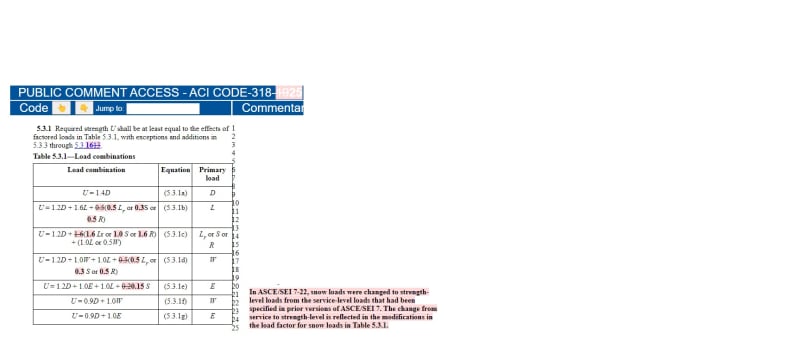YHW2012PE
Structural
- Aug 14, 2013
- 6
I found the snow load combination factor conflict between ASCE7-22 (IBC 2024) and ACI 318-19. The ASCE 7 (IBC 2024) LC factor is 1.0 but the ACI 31819 still uses 1.6. So please tell how about your current designs? How do you solve this conflict? Appreciate it very much if you can write your ideas.
Youhai Wang, P.E./P.Eng.
Principal and Chief Structural Engineer
Maple Creek Engineering Ltd.
Youhai Wang, P.E./P.Eng.
Principal and Chief Structural Engineer
Maple Creek Engineering Ltd.

